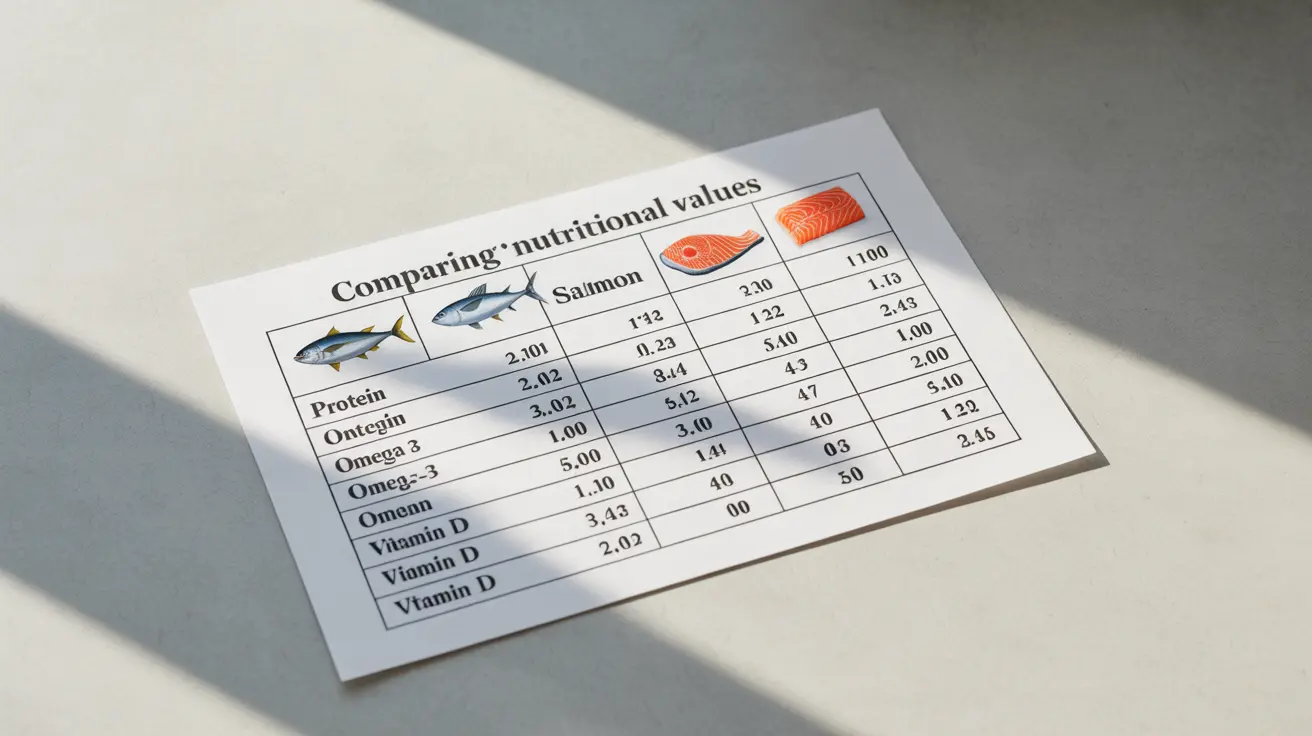When it comes to making healthy seafood choices, both tuna and salmon stand out as popular options. However, these fish have distinct nutritional profiles that can make one a better choice depending on your health goals. This comprehensive guide will help you understand the key differences between tuna and salmon, enabling you to make informed decisions about which fish best suits your dietary needs.
Nutritional Profile Comparison
While both tuna and salmon are excellent sources of protein, their nutritional compositions differ significantly. Tuna is generally leaner and lower in calories, while salmon provides more healthy fats and essential nutrients.
Protein and Caloric Content
Tuna typically contains slightly more protein per serving, with about 26 grams per 3.5 ounces (100 grams), compared to salmon's 22-25 grams. Tuna is also lower in calories, making it an excellent choice for those focusing on weight management or muscle building.
Fat Content and Omega-3s
Salmon contains significantly more omega-3 fatty acids than tuna, particularly EPA and DHA. A 3.5-ounce serving of salmon provides about 2.3 grams of omega-3s, while the same amount of tuna contains approximately 0.7 grams. These essential fatty acids are crucial for brain function, heart health, and reducing inflammation.
Vitamin and Mineral Content
Vitamin D Levels
Salmon is one of the best natural sources of vitamin D, containing about 386-447 IU per 3.5-ounce serving. In contrast, tuna provides around 85 IU per serving. This makes salmon particularly valuable for bone health and immune system function.
B Vitamins and Selenium
Both fish are excellent sources of B vitamins, particularly B12, which is essential for nerve function and red blood cell formation. They also provide selenium, an important mineral for thyroid function and antioxidant protection, with tuna containing slightly higher amounts.
Safety Considerations
Mercury Content
Tuna, especially larger species like albacore and yellowfin, typically contains higher levels of mercury than salmon. This makes salmon a safer choice for regular consumption, particularly for pregnant women, nursing mothers, and young children.
Recommended Consumption
Due to mercury concerns, it's generally recommended to limit tuna consumption to 2-3 servings per week, while salmon can be eaten more frequently. Wild-caught salmon is often preferred due to lower levels of environmental contaminants.
Frequently Asked Questions
What is the main nutritional difference between tuna and salmon, and which one is better for heart health? Salmon contains more heart-healthy omega-3 fatty acids and vitamin D, while tuna is leaner and higher in protein. For heart health, salmon generally has the edge due to its superior omega-3 content.
Is tuna or salmon higher in protein and lower in calories, and which is best for weight loss or muscle building? Tuna contains slightly more protein and fewer calories per serving, making it ideal for weight loss and muscle building. However, salmon's healthy fats can help with satiety and overall nutrition.
Which fish has more omega-3 fatty acids—tuna or salmon—and why does that matter for brain and heart health? Salmon contains significantly more omega-3 fatty acids than tuna. These essential fats are crucial for brain function, reducing inflammation, and supporting cardiovascular health.
How do the vitamin and mineral contents of tuna and salmon compare, especially for vitamin D, B vitamins, and selenium? Salmon is richer in vitamin D, while both fish provide similar amounts of B vitamins. Tuna contains slightly more selenium. Both fish offer excellent nutritional profiles with complementary benefits.
Are there any safety concerns, like mercury levels, when choosing between tuna and salmon, and which is safer for regular consumption? Tuna typically contains higher levels of mercury than salmon, particularly in larger species. Salmon is generally considered safer for regular consumption, especially for vulnerable populations like pregnant women and children.




